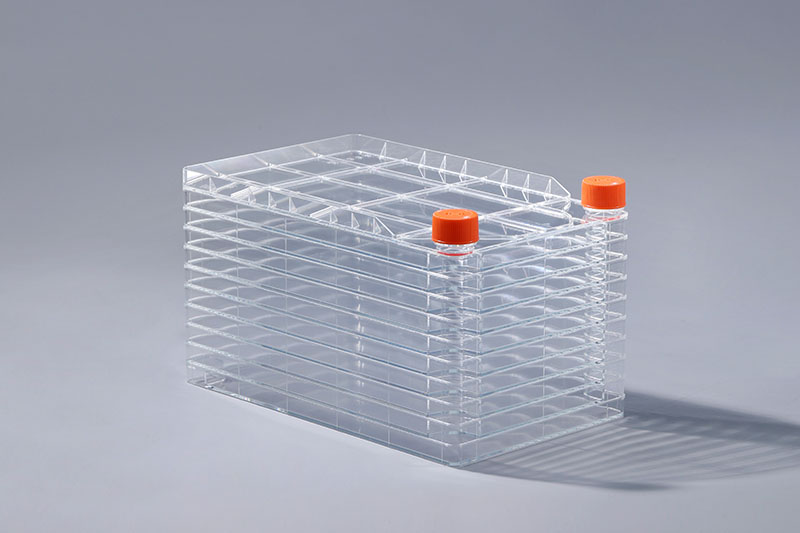A cell factory is a container for large-scale cell culture, and is widely used in adherent cell culture. It has the advantages of saving space and reducing pollution. In practical applications, this kind of cell culture container is more common in the following three fields.
1. Vaccine industry: As an important biological product, the complexity of vaccine development and production is self-evident. How to achieve economical, efficient and safe large-scale production of vaccines has always been the focus of the industry. Although the technical routes of vaccines are different, the general preparation and production processes are similar, and both need to go through the culture stage of cells or bacteria. At first, the large-scale production of vaccines in my country mostly relied on cell spinner culture technology. With the continuous innovation of technology, it has been gradually replaced by cell factories. At present, the cell factory has been widely used in the industrial production of new crown vaccine, oral inactivated polio vaccine, freeze-dried live attenuated hepatitis A vaccine, measles vaccine, oral live rotavirus vaccine, chickenpox vaccine, etc.
2. Cell and gene therapy: In the field of pharmaceutical research and development, cell and gene therapy has become a new track derived from recent years. This type of treatment is vector therapy in the final analysis, and how to safely and effectively deliver target genes or cells into the human body has become an important bottleneck for this therapy to break through. Generally speaking, genetic material cannot be directly inserted into human cells or genes, and it is necessary to use viruses as vectors, such as adenovirus, adeno-associated virus and lentivirus. Small-scale production for R&D purposes uses adherent cells grown in petri dishes, flasks, and cell factories. When turning to clinical experiments, a large number of lentiviral vectors will be required, and it is particularly important to scale up the production process. At this time, a multi-layered cell factory is required. In terms of ease of operation, 10-layer cell factories are widely used.
3. Stem cell field: Stem cells are a type of cells with infinite or immortal self-renewal ability, capable of producing at least one type of highly differentiated progeny cells. Stem cell therapy is currently a research hotspot in the field of regenerative medicine. According to the US clinical trial database clinicaltrials.gov, there are currently more than 1,300 clinical trials related to mesenchymal stem cells in the world, and 14 new stem cell drugs have been approved for marketing. As of April 28, 2022, a total of 26 products from 21 domestic companies have been granted tacit approval to enter clinical trials (IND). The use of cell factories to scale up the process of mesenchymal stem cells and pluripotent stem cells is an important step in stem cell research.
The above are the three areas where the cell factory is widely used. With the help of the supporting pipeline system, the aseptic transfer of liquid can be realized, which greatly reduces the risk of contamination. This culture method has become a mainstream cell culture mode at present.
The FAI climbed 5.9 percent year-on-year in the first 11 months of 2018, quickening from the 5.7-percent growth in Jan-Oct, the National Bureau of Statistics (NBS) said Friday in an online statement.
The key indicator of investment, dubbed a major growth driver, hit the bottom in August and has since started to rebound steadily.
In the face of emerging economic challenges home and abroad, China has stepped up efforts to stabilize investment, in particular rolling out measures to motivate private investors and channel funds into infrastructure.
Friday's data showed private investment, accounting for more than 60 percent of the total FAI, expanded by a brisk 8.7 percent.
NBS spokesperson Mao Shengyong said funds into weak economic links registered rapid increases as investment in environmental protection and agriculture jumped 42 percent and 12.5 percent respectively, much faster than the average.
In breakdown, investment in high-tech and equipment manufacturing remained vigorous with 16.1-percent and 11.6-percent increases respectively in the first 11 months. Infrastructure investment gained 3.7 percent, staying flat. Investment in property development rose 9.7 percent, also unchanged.
 English
English



















































